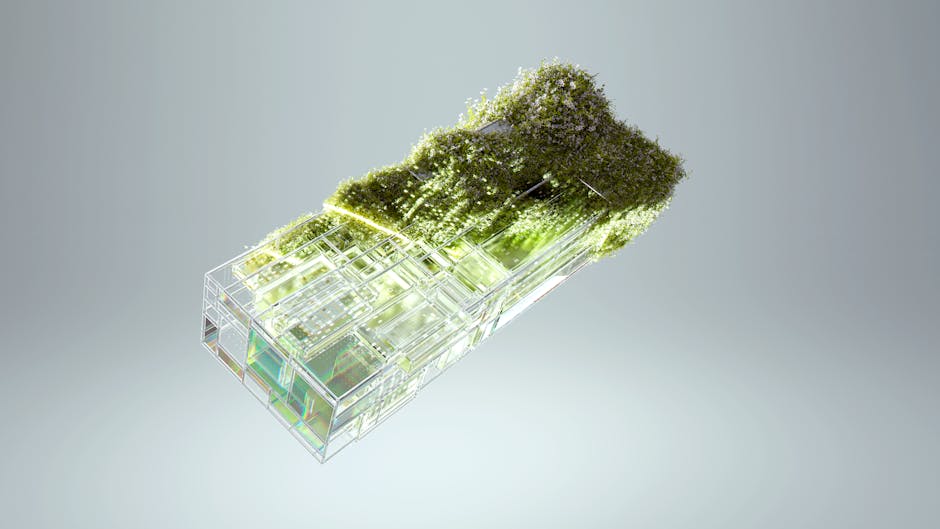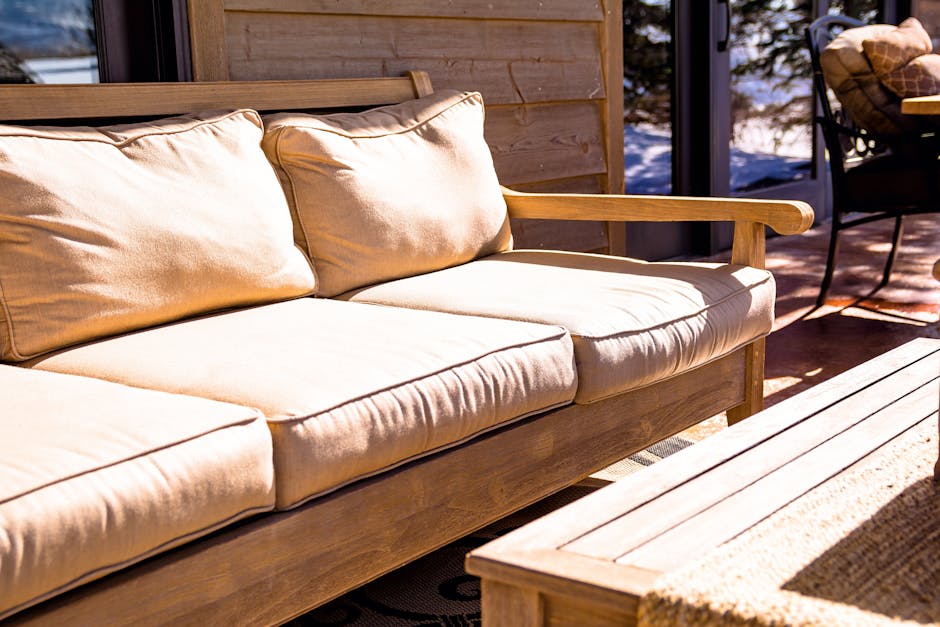Create a Harmonious Home: The Art of Biophilic Design
Have you ever stepped into a space that instantly made you feel relaxed, revitalized, and connected to nature? This experience is at the heart of biophilic design, a concept that seamlessly integrates natural elements into our built environments. By embracing biophilic principles, we not only elevate our well-being but also contribute significantly to reducing our carbon footprint. In this comprehensive exploration of biophilic design, we'll delve into its benefits, practical applications, and how you can transform your home into a sanctuary of sustainability.
Understanding Biophilic Design: A Deep Dive

Biophilic design goes beyond just having a plant in the corner of your living room. It encompasses a holistic approach to integrating nature and natural processes into our everyday experiences. Research suggests that interactions with nature foster psychological well-being and reduce stress. The term "biophilia," coined by American biologist Edward O. Wilson, suggests that we have an innate affinity for the natural world, stemming from our evolutionary history.
According to a 2021 study published in the journal Environmental Psychology, environments that incorporate biophilic features—like natural light, greenery, and organic materials—resulted in significantly lower stress levels and greater satisfaction among occupants. This aligns perfectly with sustainable living objectives. As we become more conscious of our environmental impact, the principles of biophilic design provide a pathway to enhance both our physical spaces and our mental health.
Benefits of Biophilic Design: Elevating Well-Being

The fundamental aim of biophilic design is to create spaces that promote healing and comfort. Let's unpack some of the benefits:
1. Improved Air Quality

Incorporating indoor plants not only beautifies a space but also contributes to cleaner air. Plants such as snake plants and peace lilies have air-purifying qualities, absorbing harmful pollutants and increasing the oxygen levels in your home. A study featured in Journal of Environmental Psychology showed that occupants felt a 60% happier mood after adding plants indoors.
2. Enhanced Mental Health

Natural elements in your living space can significantly alleviate anxiety and improve concentration. Biophilic design encourages mindfulness and presence, reducing the overwhelm often experienced in our busy lives. Simple elements like views of greenery or natural materials can positively impact our mental state, making our homes not just shelters but havens of tranquility.
3. Lower Carbon Footprint

By using sustainable materials and optimizing natural resources, biophilic design actively contributes to lowering your home's overall carbon footprint. For instance, utilizing reclaimed wood or sustainably sourced materials not only minimizes resource extraction but also tells a story, enhancing the aesthetic and emotional values of your home.
Practical Applications of Biophilic Design in Your Home

It's exciting to think about the possibilities of biophilic design within your living space. Here are some practical applications that you can start implementing today:
1. Integrating Indoor Plants

Start with easy-to-care-for indoor plants. Consider creating a vertical garden on a wall or setting up a windowsill herb garden. Not only does this bring freshness to your home, but it also aligns seamlessly with sustainable living practices. You can find more about the benefits of indoor plants in our article on how indoor plants combat air pollution and boost well-being.
2. Designing with Natural Light

Maximize natural light in your indoor spaces. Use light, airy materials that reflect rather than absorb sunlight. Window placement is critical; aligning your windows with the sun’s path can help regulate indoor temperatures and reduce reliance on artificial lighting. Natural light also elevates mood and enhances productivity.
3. Organic Textures and Colors

Incorporate materials reminiscent of nature—think wood, stone, and natural fibers. Earthy tones create a soothing atmosphere and shift the feeling of your home toward groundedness and peace. Consider using natural dyes, which can be both eco-friendly and beautiful, as suggested in our piece on biodegradable dyes for sustainable fashion.
4. Creating Outdoor Living Spaces

If you have outdoor space, consider turning it into a mini oasis. Design a garden that supports native plants, which are better adapted to your local climate and ecosystem. This is not only beneficial for your home’s aesthetic but also promotes biodiversity, which we discuss in our article about boosting biodiversity through backyard bioblitzes.
Engaging with Local Nature

Embracing biophilic design also involves connecting with the local environment. Incorporating local materials and designs fosters a sense of community and respect for the environment. This concept aligns with our previous discussion on local wisdom and eco-conscious resilience strategies.
1. Sustainable Landscaping

Choose landscaping options that reflect your local ecosystem. Native plants not only require less water but also provide habitats for local wildlife. In addition, implementing permaculture principles can help create a self-sustaining environment to support biodiversity.
2. Eco-Friendly Practices

Reduce waste by composting organic matter from your kitchen. This not only enriches your garden but also minimizes landfill waste. You can explore more about sustainable practices in our feature on sustainable living.
The Psychological Impact of Nature

A diverse interaction with nature can produce a significant positive effect on our holistic health. The sounds of nature, for instance, have been shown to improve psychological well-being. Soundscapes can bring tranquillity and calmness, so consider integrating nature-inspired sound features into your home design. For a deeper dive into how sound impacts well-being, check out our article on elevating eco-friendly spaces with sound.
1. Acoustic Design
Investing in sound-absorbing materials can create a serene atmosphere in your home. Soft textiles, cork flooring, and strategically placed plants can help improve acoustics, reducing noise pollution and stress.
Achieving Harmony with Technology
While embracing natural elements, technology should not be abandoned. Smart home technologies that optimize energy use greatly support sustainability. For instance, smart thermostats and energy-efficient appliances help reduce energy consumption while providing comfort.
1. Energy Monitoring
Utilizing apps that monitor your energy usage can make your home not just eco-friendly but also smarter. By tracking consumption, you can identify areas where you can further cut down on energy waste.
2. Sustainable Innovations
Innovative technologies, such as solar panels and rainwater collection systems, can dramatically lower your ecological footprint while complementing your biophilic design strategy.
Creating Lasting Impact with Biophilic Design
Ultimately, biophilic design is not just about aesthetics; it's about building a lifestyle that honors the relationship between nature and the human experience. Each choice adds up, contributing to a healthier planet and a happier you.
1. Community Engagement
Consider hosting neighborhood workshops or discussions about sustainability practices. Sharing ideas and resources can foster a stronger community focused on environmental stewardship. Check our informative guides on micro-gardening for urban eco-consciousness for more inspiration.
2. Commitment to Long-Term Changes
The journey toward sustainable living is ongoing. Embrace the mindset of continuous improvement and adaptability. Regularly assess your home's biophilic elements and explore ways to enhance your living environment further.
Final Thoughts
Embarking on the journey of biophilic design opens the door to a world where nature seamlessly intertwines with our everyday lives. By elevating our home environments with natural elements, we not only enhance our well-being but also take significant steps toward a more sustainable future.
Start small—add a plant, open up your space to natural light, or consider a redesign that includes both functional and aesthetic elements rooted in nature. As you begin this enriching process, remember that every action counts, and each effort contributes to a more harmonious relationship with our planet.
Whether it's through engaging with your local environment, utilizing sustainable materials, or harnessing innovative technologies, the art of biophilic design is an invitation to live consciously, sustainably, and joyfully.



